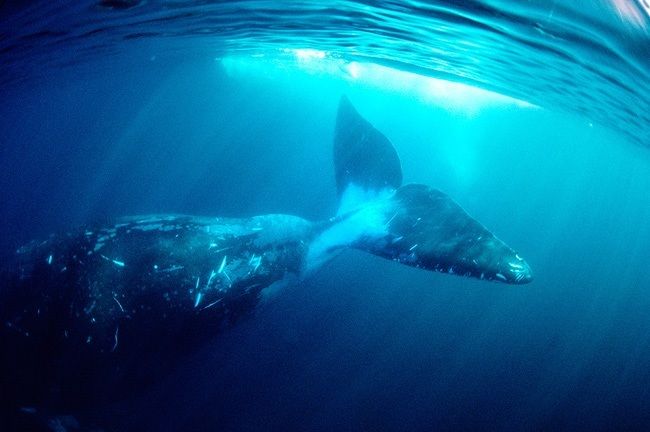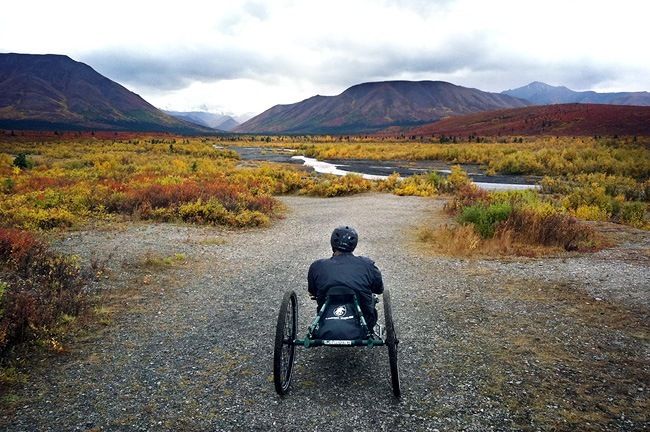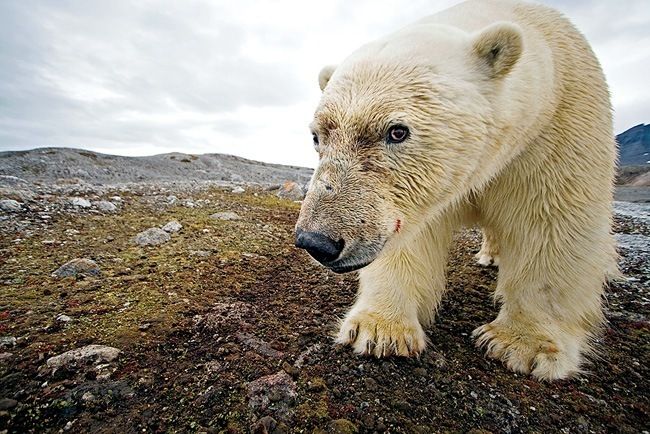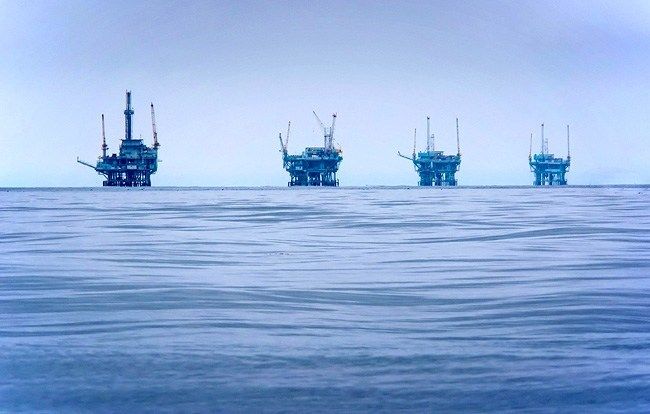
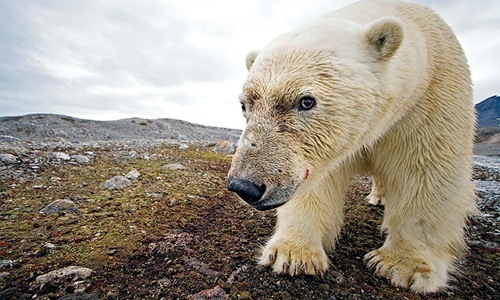
4. Most of our planet’s Pacific walrus use the Chukchi during the summer months. When forced onto coastal “haul out” areas, walruses must swim distances over 100 miles to reach Chukchi feeding grounds to find the clams and other bottom-dwelling species they need to survive. Walruses do not have the ability to swim indefinitely and are under great stress when forced to swim from coastal resting areas, without sea ice to rest on.
With dwindling sea ice, access to food sources in the Arctic is growing scarcer. And exploring for oil will bring deafening seismic blasts, which carry through the water for hundreds of miles, and other disturbances that can cause herds to move away from foraging areas and even stampede from coastal haul outs, in the process trampling and killing their young and smaller walruses.
5. Endangered bowhead whales thrive in narrow shelf waters. They live near the edge of the moving ice pack, as it drops south in the winter and recedes north in the summer, for the bulk of the year, using their large skulls to break through thick ice when needed.
Shell’s planned drilling operations are directly in the whales’ summer and fall migration path to rich feeding grounds the whales need to survive. The government admits that it does not know all the areas important to bowheads but evidence suggests several are near potential drilling sites.
According to the National Oceanic and Atmospheric Administration, the historic worldwide abundance of bowhead whales prior to commercial exploitation was estimated at about 30,000–50,000, but was driven down to about 3,000 animals by the 1920s. The current population of the Bering-Chukchi-Beaufort Seas stock of bowhead whales is now thought to number between 10,000 and 16,000 individuals.
Shell’s drilling and ice-breaking could harass more than 1,000 bowheads, including sensitive mothers and calves. The major noise and activity from drilling, along with related explosive seismic testing, can drive whales away from areas of food and rest.
6. Earthjustice attorney and Alaska resident Erik Grafe has been at the forefront of protecting the Arctic’s iconic waters, wildlife and communities since 2007. In addition to the dangers of oil spills in key migration and feeding areas, he explains that drilling in the Arctic will accelerate climate change effects already wreaking havoc on wildlife and communities in the region and having effects far beyond the Arctic.
“As the international scientific community and President Obama recognize, we cannot develop the vast majority of already known oil reserves, let alone extreme Arctic Ocean oil, if we are to avoid the worst climate change consequences,” says Grafe.
7. The Chukchi Sea’s oil and gas Lease Sale 193, which leased millions of acres of the pristine Sea’s outer continental shelf, has already been declared illegal twice by the courts—first in 2010 and then in 2014—thanks to Earthjustice litigation.
Still, the Department of the Interior re-considered and re-affirmed the sale in late March of this year. The move opened the gate for risky oil drilling in America’s Arctic, home to one-tenth of the world’s polar bear population—and the entire U.S. population of the species.
On June 1, 2015, a coalition of 12 environmental and Alaska Native groups announced their intent to bring a new challenge to the controversial Bush-era Lease Sale. Earthjustice is representing Alaska Wilderness League, Center for Biological Diversity,Friends of the Earth, Inupiat Community of the Arctic Slope, National Audubon Society, Natural Resources Defense Council, Northern Alaska Environmental Center,Pacific Environment, Resisting Environmental Destruction on Indigenous Lands (REDOIL), Sierra Club, The Wilderness Society and World Wildlife Fund in the legal challenge.

 233k
233k  41k
41k  Subscribe
Subscribe 
